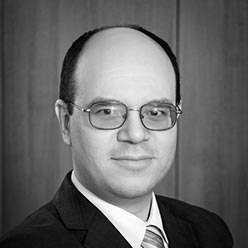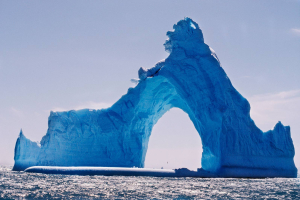In the second quarter of 2022, the Bank of Russia is launching the circulation of unsponsored foreign ETFs on Russian exchanges (see the Box). In recent years, ETFs have essentially brought about a revolution in finance, allowing millions of investors to save billions of dollars in asset management companies’ fees. Without any doubt, passive investment through ETFs is one of the most influential financial innovations of the last fifty years.
The economics of exchange-traded funds
There is no universal definition of an ETF in the economic literature. The National Association of Investment Companies (USA) and the Investment Company Institute (ICI) use the following definition: ‘An exchange-traded fund (ETF) is a pooled investment vehicle with shares that investors can buy and sell throughout the day on a stock exchange at a market-determined price. Investors may buy or sell ETF shares through a broker or in a brokerage account just as they would the shares of any publicly traded company’. According to ICI, ‘authorised participants’ – generally institutional investors – are the only investors allowed to create and redeem shares of the fund. The CFA Institute defines an ETF as a hybrid investment product in which the investment features of mutual funds are combined with the trading features of common stocks.
The Russian law ‘On Investment Funds’ (link in Russian) defines an exchange-traded unit investment fund (ETUIF) as a type of a unit fund. In contrast to a classic unit fund, however, the owner of an ETUIF has the right to sell it on an exchange or request its purchase at a fair price from an authorised participant. A unit fund itself is not a legal entity. Its status under Russian law is defined as a separate asset portfolio placed under trust management.
Some characteristics of ETFs as a class of financial products make them distinct from other funds. These include: the issuance of equity securities in the form of fund shares/units; stock exchange listing; daily trading and pricing of shares; and the dependence of the fund structure and its returns on a certain financial benchmark that tracks the value of the basket of core assets in which the ETF invests investors’ funds.
To understand the economics of ETFs, one must distinguish between their primary and secondary markets, which are distinct from stock or bond markets.
In the primary ETF market, fund shares are issued and redeemed on a daily basis, which makes them unique and popular in the financial market. Only the secondary market is open to retail investors who can sell and buy shares there. A decision to create a new ETF is made by a ‘sponsor’ (‘fund provider’). Due to direct or indirect obligations, such sponsor may be called a ‘manager’ or ‘trustee’ of the fund. This role is usually played by one of major portfolio managers, such as BlackRock, State Street and Vanguard, or their subsidiaries. ‘Authorised participants’ represent the second key element of the primary market. Finally, the depository responsible for keeping record of asset ownership is the third important element of the system.
The sponsor enters into an agreement with one or more authorised participants, usually brokers, selling and redeeming fund shares for them. In the case of small-scale ETFs, the sponsor itself may act as an authorised participant. ETF shares are purchased by authorised participants for distribution in the secondary market. It is these continuous issue and redemption of shares that distinguish ETFs from bonds and ordinary stock.
To receive ETF shares, authorised participants must pay for them or provide the fund with securities to the same amount, which they can buy or borrow. As a rule, exchangeable securities are included in the financial benchmark the fund is focused on. At some exchanges, authorised participants are involved in both market making and quoting the ETF share prices on a daily basis. The architecture of the Russian ETUIF market is far simpler as it does not involve authorised participants. In most cases, the asset management company, acting as a sponsor, sells its fund shares on the exchange and acts as a market maker at the same time.
The main parameter of an ETF is its net asset value, which is essential for both primary and secondary market transactions. In the primary market, the net asset value is linked to the volume of the ETF shares issued and redeemed; in the secondary market, the net asset value is used as a measurement base for deviations in the prices of ETF shares. Investors engaged in daily trading may conduct operations to make use of arbitrage between the current market share price and the fund’s net asset value per share. Arbitrage is possible thanks to the so-called ‘tracking error’, i.e. lack of full alignment between the actual portfolio and its benchmark structure due to time lags in portfolio rebalancing. Therefore, the price of a share depends on the arbitrage of authorised participants between the primary and secondary markets, which helps establish fair prices for the shares.
Russian market for exchange-traded funds
The Russian markets for domestic investors in ETFs and ETUIFs have emerged fairly recently. The Moscow Exchange began to list the shares of its first ETF in 2013. It was the USD fund of Russian corporate bonds issued by FinEx, a UK asset management company registered in Ireland for tax purposes. The first fund measured itself against the basket of the Bloomberg Barclays EM Tradable Russian Corporate Bond Index. It was followed by a number of ETFs for Russian investors, created by the same asset management company.
As of July 2021, retail investors can buy shares from 94 different ETFs on the Moscow Exchange (link in Russian), with a combined net asset value of 226 billion rubles. The available fund shares are those of FinEx, Sber Asset Management JSC, Alfa-Capital Management Company LLC and Tinkoff Capital. They account for about 88% of the net asset value of all the funds. There are 14 other asset management companies working on this market, but none of them accounts for more than 10%. The largest fund, created by Sberbank Group, has 19,000 investors and is nearly 25 billion rubles worth of net asset value. The fund tracks the MOEX Corporate Bond Index.
About half of the ETF/ETUIF assets are focused on the domestic market, and the other half targets foreign markets. The market is dominated by traditional stock funds (accounting for 55% of the net asset value) and bond funds (32%). Under federal law, all Russian ETUIFs must reinvest dividends and coupon yields gained. Investors can only earn income by selling units.
As the financial market regulator, the Bank of Russia sets minimum requirements for an ETUIF portfolio. In particular, it regulates the list of assets (link in Russian) that may be included in ETUIF portfolios, including securities listed on exchanges abroad, as well as the concentration limit per issuer (that is being reduced from 13% in 2021 to 10% in 2023). In addition, the regulator has established that the concentration limit should apply in case of following certain stock indices, and has published the list of such indices (link in Russian): as of August 2021, it features 42 indices, including MOEX Russian indices, MOEX Blue Chips indices, and RTS indices. For some ETUIF assets, the Bank of Russia sets a minimum credit rating.
Foreign vs domestic ETFs
Several strategic growth problems are specific to the Russian fund market. The largest of these problems is the depth and density of the core asset market. There are about twenty active issuers whose markets are sufficiently liquid for daily operations of funds and for pricing. Our estimates show that in an average portfolio, 10% of issuers account for 70% of the fund’s assets. In this regard, funds do not offer particularly ample opportunities for diversification: a retail investor can buy the same set of securities independently and without having to pay a management fee.
The shortage of issuers is forcing investors to look at foreign markets, making US companies, such as Apple or Tesla, very popular with retail investors. The problem can only be addressed through new IPOs, since the fund market will have no investment basis for expansion without them.
The second problem is that many retail investors choose an overly active, borderline gambling-like strategy. There are 4.5 million holders of units (link in Russian) who are passive investors, whereas as many as 13 million Russians (link in Russian) had brokerage accounts as of July 2021. Even though over half of these brokerage accounts have a zero balance, the number of investors who are active or willing to engage in active trading operations (i.e. those who have funds in their brokerage accounts) greatly exceeds that of passive shareholders (no brokerage account is needed to buy ordinary units of UIFs). Passive investment instruments play a similarly minor role in portfolios. According to the Bank of Russia’s calculations, the share of all types of units in citizens’ portfolios is 7% for qualified investors and 6% for non-qualified investors.
Finally, it is important to note that retail investors are more active in exchange trading than professional financial market participants. Individual non-professional investors account for 39% of the Moscow Exchange’s stock turnover (. pdf), whereas dealers account for a mere 6%. Overly active investors conducting transactions several times a day run the risk of losses against stock indices. Thus, in addition to holding back the long-term and balanced investments that the economy needs, excessive trading may also cause damage to investors themselves. Conversely, collective investment products help foster a culture of long-term investments.
The third strategic problem has to do with the distribution of investors between different types. The core investors in the Russian stock market are foreign funds, owning about 81% of all securities in free circulation. Most non-resident investors are from the US and UK, however, some of their assets are of Russian origin.
At the same time, we can see the opposite trend. According to our estimates, investments in foreign securities account for 53% of qualified investors’ portfolios, and for 34% of non-qualified investors’ portfolios. Overall, foreign assets make up 47% of the portfolios of retail investors of all categories. The profound reciprocal penetration of investments creates spillovers, where external shocks feed through to the domestic market.
Finally, management fees represent another important subject. Funds may have the same portfolios, risks and profit, but their assets may be subject to different fees. As a rule, managers claim that objective factors underlie all the differences in the size of fees and the time and methods of their calculation. However, studies show that these complex calculation formulas are part of a strategy to conceal information about high fees, which makes it impossible to directly compare funds with each other. Professionals call it ‘strategic obfuscation’, a term referring to how difficult it is to describe management fees due to their structural complexity.
Russia has a similar problem of incomparable fees, which is further complicated by the fact that they are relatively high. As of July 2021, the median ETF/ETUIF fee was 0.95% and its weighted average was 0.86% (which means that small and specialist funds charge higher fees). For comparison, the asset-weighted fee in the US is 0.19%, and similar costs are reported for the European, Canadian and Asian markets. For example, the fee in Asia is about 0.26%. The fees of some large passive ETFs have been at almost zero for a while. In particular, State Street manages funds with a 0.03–0.06% fee. BNY Mellon and Fidelity took a step further and launched a number of zero-fee index funds. Some market participants run temporary experiments: for example, Salt Financial (USA) offered ETFs with a negative fee.
Excessive fees in Russia are explained by a high appetite for profits, low level of competition and weak economies of scale due to the market size. In this environment, it comes as no surprise that the asset management company of a well-known Russian bank has set up a fund of US corporate bonds with a cumulative fee of 0.35%, while the fund itself consists of shares of Vanguard, a specialist asset management company, whose fee is 0.09%. In Russia, ‘trending’ funds specialising in IPOs or high-tech stock may charge a fee of up to 2.5–3.0%.
High costs may not matter much when the returns are in double digits, but they will discourage investors in a stagnant and declining market. International experience shows that the strongest downward pressure on fees comes from a competitive environment.
Opening access to foreign ETFs
The Bank of Russia has set rather stringent requirements for foreign unsponsored ETFs that will be listed on Russian exchanges from 2022 on. In particular, ETF shares must be listed on a foreign exchange and must not be exclusively intended for qualified investors. Only ETFs with over 100 billion rubles (approx. $1.4 billion) of net asset value may be listed. Furthermore, given that the sponsor does not organise their circulation on Russian exchanges on its own, and that domestic brokers are not authorised participants, certain support is needed to maintain normal ETF trading. In particular, an ETF market should have a market maker, and exchanges should assist in the redemption of shares if a fund is liquidated.
The Bank of Russia plans to limit the sale of high-risk ETFs. The ban will extend to inverse and leveraged ETFs, as well as ETFs with a 20%+ concentration of a single financial instrument in the portfolio.
Opening access to the foreign market is intended to address several strategic objectives.
First, this will push retail investors to move away from certain foreign stock towards a diversified portfolio. Considering that it is difficult for an average retail investor to build a balanced portfolio ‘like a pro’, ETFs offer investors a ready-made portfolio solution. Priority should be given to ETFs focused on stock indices with the highest diversification. An example of such a ‘broad’ index is MSCI ACWI, a global stock index covering 2,900 issuers from 50 countries, which account for 85% of the global market capitalisation. Novice investors should avoid thematic and ‘trending’ ETFs (focussed on robotisation, environment, healthcare, digital assets, etc.) and the types of investments they do not fully understand. At the same time, it is important to discourage retail investors from buying homogeneous ETFs with similar strategies or overlapping portfolios, since such behaviour erodes the diversification effect.
Second, this will reduce the costs of building portfolios for retail investors. Trading in individual securities is subject to fees applying to each transaction and involves bid-offer spreads. The lower the volumes of retail investors’ transactions, the higher the spreads. A purchase of an ETF saves money because institutional investors’ transactions come with lower relative costs. In addition, ETFs compare favourably with other funds in the sense that their average management fee is lower. To select funds with the lowest costs, investors need to look at their overall cost ratio, which is the ratio of the combined annual fees to the net asset value.
Third, the move will ensure sustainable financial returns on investment. All things being equal, diversification makes investments in ETFs less risky relative to investments in individual types of foreign stock or bonds. Trading in ETF shares will stabilise returns, sustaining long-term interest of retail investors in the market. If a retail investor chooses to make independent decisions regarding individual issuers, they may end up with returns inferior to those of stock indices, which is often the case for active trading.
It is essential that a retail investor relies on the saving strategy in selecting ETFs, e.g. takes into account whether the ETF pays dividends on stock in its portfolio or reinvests them; ETFs with reinvestment tend to yield higher returns. It is also important that foreign ETFs calculate their after-tax financial results differently. The taxable base of ETF investments will include changes not only in the share price, but also in the ruble exchange rate. In fact, the investor pays the personal income tax on the difference between the ruble value of the shares at the beginning and at the end of the period when those were held.
Fourth, the trading strategy will change: the bulk of retail investors should move away from aggressive trading in favour of passive investment. ETF investments, unlike purchases of individual securities, do not involve daily trading in shares. ETFs are not intended to be used for short-term speculations, as their investment horizons span years. Savings may consist of one or more global diversified ETFs, and investments in them do not have to be regularly reviewed.
According to John C. Bogle, the creator of the first index fund and founder of Vanguard, the correct retail investment strategy is to retain shares of a fund until investment goals have been met (retirement, real estate purchases, etc.). This is why some index funds of Vanguard Group are not listed.
Fifth, the initiative will encourage competition between asset management companies. Nothing but competitive pressures can improve the quality of customer service and reduce fees. As Russian managers anticipate the opening of the market for unsponsored foreign ETFs, they are rushing to create clones of the most popular foreign funds. Importantly, many ETUIF portfolios contain nothing but foreign originals, i.e. shares of foreign ETFs.
The opening of the foreign ETF market is a challenge for domestic ETUIFs. The practice of repacking a foreign ETF into a Russian ETUIF with a higher management fee is likely to stop. The aggregate product line for retail investors is going to expand. The retail investors are recommended not to rush and not to switch between funds hastily in expectation of medium-term investment results. Not only will this initiative enable investors to avoid excessive fees and premature income taxes, but it will also support market competition between funds, both old and new, foreign and Russian.
However, it is also essential to ensure that domestic ETUIFs are not pushed into the background once ETF sales start. The Bank of Russia plans to make several steps to this end in the near future, aiming to develop the ETUIF market. In addition, the regulator supports the idea of allowing brokers to act as tax agents for ETUIF units, calculating and paying investors’ taxes to the budget on their behalf.








